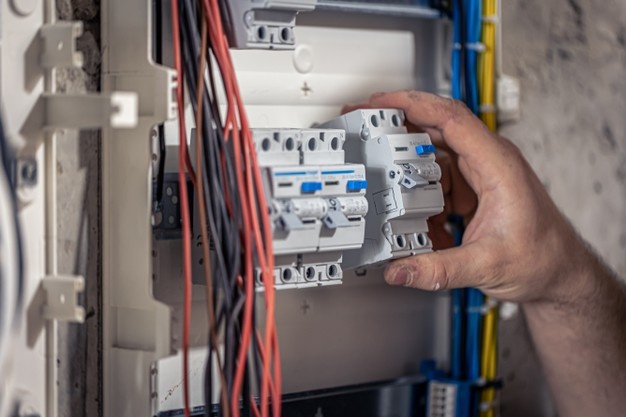Overload relays are electrical devices designed to prevent motors from overloading. In many industries, they’re essential for maintaining tight safety standards, protecting equipment, and keeping workers safe from fires and other workplace hazards.
In this article, you’ll find clear definitions of the main types of overload relays on today’s market, including their industrial and commercial applications.
Magnetic overload relays
A magnetic overload relay is a device that controls the flow of electrical current in an electric power grid system. Industrial workplaces use them to protect equipment from overloads, short circuits, power surges, and other sudden changes in the current level.
Transformers, circuit breakers, generators, motors, transformers and other devices may benefit from magnetic overload relay protection.
These devices feature a set of electrical contacts that are sensitive to changes in magnetic fields, which can result from an electric current exceeding the design value. When this happens, the relay opens the electrical contacts and disconnects power from the motor or solenoid coil, effectively shutting down the equipment.
Thermal overload relays
A thermal overload relay is a device you might install on an electrical heating appliance to protect it from overheating.
Thermal overload relays monitor the temperature of the heater or other electrical heating appliance and take corrective action if the temperature rises too high. This process is similar to other relays—when the appliance gets too hot, the relay cuts off power to it.
The primary purpose of thermal overload relays is to prevent fires and other damage resulting from excessive heat buildup.
A few industries use thermal overload relays in their machinery. The nuclear power industry uses them on control boards for safety purposes, power stations use them on their generators to avoid damage to the generator’s internal parts, and the mining industry uses them for pumps and valves.
Bimetallic thermal overload relays
Like the other relays described above, bimetallic thermal overload relays work by opening and closing a circuit automatically to protect electric circuits from overloading damage.
A bimetallic overload relay consists of an electrical contact, a moving contact, and two bimetallic springs. The two springs are made of different metals such as steel and copper. The contacts are designed so the circuit will be closed when both metals expand at the same rate due to heating.
Industries that use bimetallic overload relays include:
- Electrical equipment manufacturing
- Power generation and transmission
- Metalworking industries
- Chemical industries
Electronic overload relays
Electronic overload relays detect and switch off the power supply to an electric motor if the current running through it exceeds a pre-set value. They use current transformers or temperature sensors to sense current flow.
Compared with thermal overload relays, electronic overload relays are more precise and often boast extra features, like motor stall and fault protection. They’re a much better option if your industry uses motors that need to stop and start frequently.
Conclusion
This article should have provided you with a clear idea of four of the most common types of overload relays, their uses, and how they work. This information will help you make clearer, more informed decisions when shopping for industrial safety supplies.
- https://daoduyquang.com/the-competition-in-the-skincare-products-business/
- https://tpasfirm.com/marketing-strategies-for-skincare-product-business/
- https://ihorizontspl.com/why-you-should-start-a-skin-care-business/
- https://freemakergames.com/tips-for-getting-into-the-skincare-business/
- https://getgoparents.com/learn-how-to-outsource-your-cosmetics-from-china/
- https://hillsidehome.org/a-quick-guide-to-white-labelling-and-how-it-helps-brands/
- https://home-howto.com/an-introduction-to-white-label-manufacturers/
- https://homeimprovementdiary.org/haircare-solutions-by-melao/
- https://insideoutfitnessconcepts.com/how-do-i-get-my-haircare-products-produced/
- https://texansocial.com/best-skin-care-routine/
- https://thisvoyeurslife.com/why-to-use-hair-maintenance-products-for-your-hair/

Comments
Post a Comment